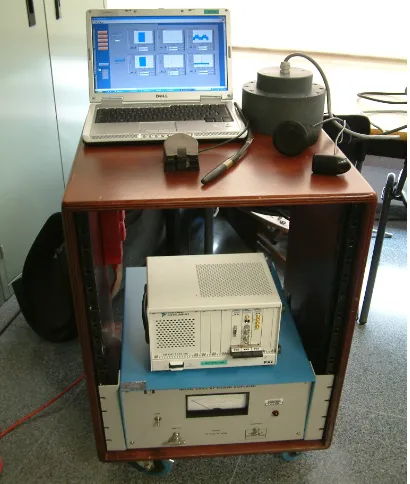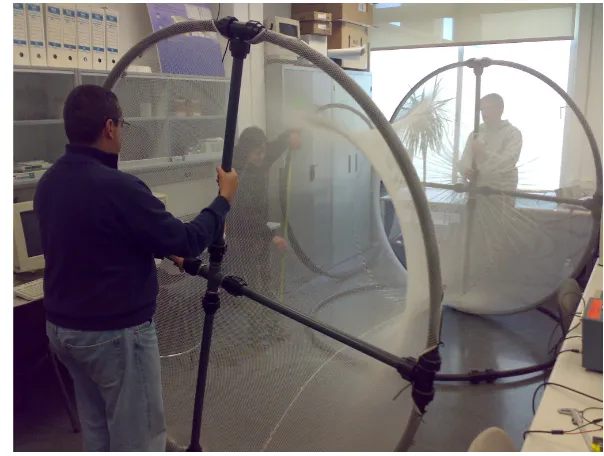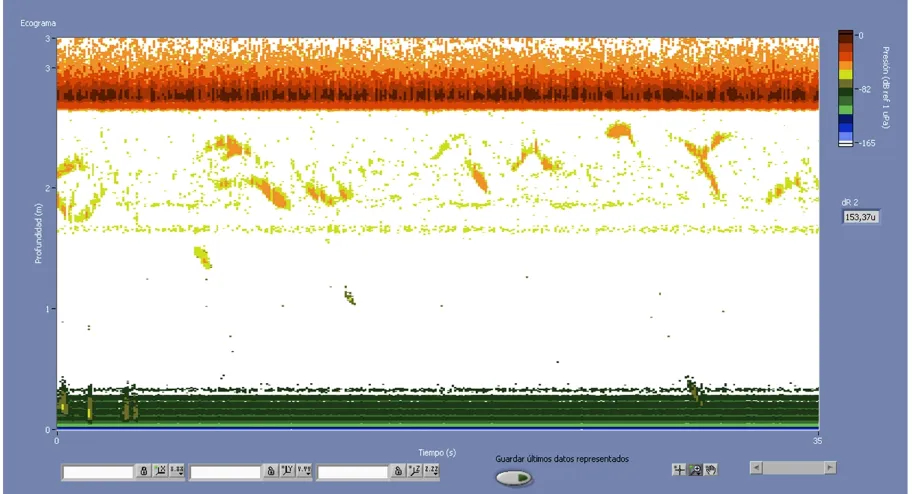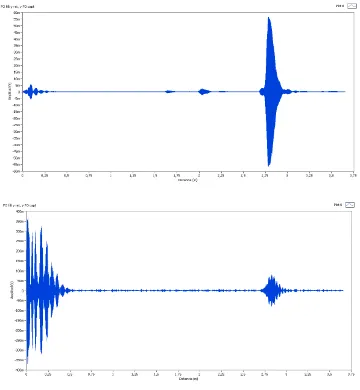Gilt-head sea-bream (Sparus aurata) cross-section measurements for the
acoustical control of sea farms
Espinosa, V.1, Soliveres, E.1. Estruch,V.D.1 , Bou M.1., Larosa, G.1, Martínez, S.2, Jover , M. 2
1Intituto de Investigación para la Gestión Integrada de Zonas Costeras, Universidad Politécnica de Valencia,
Crta. Natzaret-Oliva s/n, 46730 Grau de Gandia (Spain). (vespinosa@ fis.upv.es)
3 Instituto de Ciencia Animal, Universidad Politécnica de Valencia,
Cno. de Vera, s/n, 46022 Valencia (Spain) (mjover@dca.upv.es)
Abstract
We have studied the application of ultrasonic techniques in marine aquaculture: in particular, monitoring of present biomass in open sea farming cages. The final goals are school behaviour control and the estimation of number and growing rate of the fishes. In order to fulfil these objectives it is necessary to measure the dorsal and ventral cross-section of the species of interest, in different monostatic and bistatic configurations, using low cost commercial transducers that could be placed in production conditions.
Keywords: Gilt-head sea-bream; Acoustical cross-section; Target strength; Sea cages
1 Introduction
achievement of a permanent, and therefore affordable system, suitable to stand long periods of time in a hard environment. We consider that the acoustical techniques provide such capabilities. Nevertheless still much work must be done to achieve all these objectives. The technology of scientific or commercial echosounders has been oriented mostly to pelagic surveys, and both the equipment and common algorithms can not be applied immediately to the aquaculture farms control. The aim of this work is to continue with the initiated series of measurements to acustically characterize the species of interest [2]. The present communication shows the experimental setup and firstresults for ventral and dorsal measurement of the Sparus Aurata cross-section (or its logartihmic expression, the target strength, TS), following the methodology initiated in [3] for salmon cages .
2 Material and methods:
2.1 The modular full-wave scientific “echosounder”
[image:2.595.196.401.468.710.2]We have used a National Instruments portable PXI-1031DC with NI PXI-ExpressCard8360 connected through a USB to a laptop, and including an 100MS/s arbitrary function generator NI PXI-5412, and a NI PXI-5102, 2 channel, 20 Ms/s digitizer card, both synchronized through the same built-in clock reference. The bus connection between the PXI and the laptop permits to acquire long time series and to process the data through the Labview® programming environment. The emitted broadband signals are amplified through a ENI 240L RF amplifier. The system permits to control the emission and two simultaneous recordings using up to three piezoelectric transducers. The need of a high number of transducers in a farm with dozens of cages, and the severe environmental conditions which could cause their periodic replacement, lead us to consider the evaluation of commercial low cost transducers in the range between 50 and 200 kHz, like the WS 90-36 of Lowrance, working at 192 kHz and a -3 dB angle of 20º with a limit of working power of 75 w and Airmar dual frequency (50-205 kHz) transducers with higher limit powers.
The system permits to operate like a scientific echosounder but with the flexibility of the laboratory equipment, allowing to store the full-wave signal to investigate if desired phase or frequency dependent effecs like nonlinearities.
2.2 The Measurements Cage
[image:3.595.222.524.253.481.2]In order to measure and make statitiscs of individual TS we have built a small cage to be filled with a low number of specimens of production sizes (25 to 500 g). Figure 2 (left) show the down-looking configuration for ventral measurements of free swimming fishes, and Figure2 (right) illustrate the versatility of the human-scale construction.
Figure 2- Sea cage construction for individual TS measurements.
The cage was deployed in the harbour of Gandia, with two couple of identical tranducers (mentioned above Lowrance and Airmar) in the surface and in the bottom of the cage.
2.3 Signal acquisition and data processing
2.3.1 Signal acquisition
The signal must be emitted and recived in principle by the same transducer in a typical echosounder configuration. Nevertheless, we have also prepared the cage in order to emit and receive with two identical transdcers set side by side. The emission and reception with the same transucer requires to switch between the power and receiving channel or to protect the later one with a limiting circuit (which was our first option). We have the chance using two transducers to evaluate the infuence of the cicuitry in the quality of the acquired signal. Figure 3 shows the basic scheeme of the diode-based limiting circuit.
7º-21º
7º-21º
Depth 2.5m
Figure 3- Limiting diode circuit to protect the oscilloscope card.
2.3.2 Data processing
The Labview® programming environment allows to store temporal recordings of echoes while plotting the signal frequency filtered with a user defined band-pass filter, or altenatively.a traditional colour or grey-scale echogram which the desired threshold parameters. The time varying gain or other corrections can be easily introduced. Figure 4 shows an echogram recorded for 200 kHz and a up-looking bistatic configuration with 25 g (average weigth) fishes.
[image:4.595.70.526.411.658.2]3 Results
[image:5.595.118.478.217.607.2]The initial measurements were carried with the smallest production fishes (25 g average weigth). Our aim was to achieve the adequate signal to noise ratio. The bistatic configuration with one emiiter and a different side by side receiver permited to obtain echoes of even these small sizes (Figure 5 above). The monostatic configuration showed an excesive noise level of the same order of maginutde and sometimes more than the fish echoes amplitude. The reason was that the diode barrier let pass the white noise amplified by the power unit and therefore the information was destroyed.
Figure 5- Temporal recording with the monostatic (below) and the bistatic (above) configuration Note that the noise level in the monostatic case does not allow to register the fish echoes and the filtering
does not improve the results.
4 Conclusions
We have built an experimental setup for ventral and dorsal measurements of the gilt-head sea-bream. The system allows to reproduce with standard laboratory equipment the capabilities of scientific echosounders with the adventage of preserving frequency and phase information. Nevertheles, a switching circuit is necessary to avoid white noise amplification by he power amplifier unit in order to detect the smallest fishes in the production stage. Work is in progress.
Acknowledgements
We would especially thank the help in the design and mounting of the harbor cage to Javier Zaragozá, always supporting beyond duty, and the fish manipulation to Andrés (ICTA). Also we must acknowledge the collaboration of the Autoridad Portuaria de Gandia (Valencia) to install the sea cage in their facilities.
References
[1] APROMAR, La acuicultura marina de peces en España, 2006, in spanish, www.apromar.es
[2] E.Soliveres, V. Espinosa, E. Escuder, J. Alba, J. Redondo, M. Ardid, S. Martínez, M. Jover and V. D. Estruch, On the use of broadband signals for the acoustical characterization of the gilt-head sea bream, 19th International Congress on Acoustics, Madrid, 2-7 September 2007



